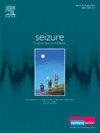法医精神病学背景下的癫痫:癫痫、暴力和刑事责任之间的关系
IF 2.8
3区 医学
Q2 CLINICAL NEUROLOGY
引用次数: 0
摘要
目的本研究旨在描述法医精神科癫痫患者的社会人口学、临床和犯罪特征,并探讨癫痫与癫痫发作、刑事责任和暴力之间的关系。材料与方法本研究纳入1235例在高度安全的法医精神科完成住院治疗的患者。在总样本中,对48名被诊断为癫痫的个体进行了社会人口学、临床和犯罪变量评估,并将其特征与总体样本进行了比较。结果癫痫患病率为3.79% (n=48)。诊断为癫痫的法医精神科患者与未诊断为癫痫的法医精神科患者在自毁行为、自杀未遂、监禁史、无案卷犯罪、指数犯罪严重程度方面差异无统计学意义(p=0.598、p=0.840、p=0.907、p=0.479、p=0.343)。癫痫组的非暴力犯罪比例更高,没有患者犯过严重的暴力犯罪。有2例(4.1%)患者的指数犯罪与癫痫和发作有关。结论法医精神科患者组癫痫患病率高于普通人群。非暴力犯罪在癫痫群体中占主导地位,这一群体中没有任何严重的暴力犯罪,在其他与暴力有关的指标中占少数,这为反对基于夸大癫痫与暴力之间关联的污名化提供了重要证据。癫痫和智力残疾的高合并率强调了制定特殊治疗方案和方法的必要性。本文章由计算机程序翻译,如有差异,请以英文原文为准。
Epilepsy in the context of forensic psychiatry: The relationship between epilepsy, violence and criminal responsibility
Purpose
This study aimed to describe the sociodemographic, clinical, and criminal characteristics of forensic psychiatry patients with epilepsy and to examine the relationship between epilepsy and seizures, criminal responsibility, and violence.
Materials and Methods
The study included 1235 patients who had completed inpatient treatment in a high-security forensic psychiatry unit. Within the total sample, 48 individuals diagnosed with epilepsy were assessed in terms of sociodemographic, clinical, and criminal variables, and their characteristics were compared to those of the overall sample.
Results
The prevalence of epilepsy was 3.79% (n=48). No significant difference was found between the groups of forensic psychiatry patients with a diagnosis of epilepsy and forensic psychiatry patients without a diagnosis of epilepsy in terms of self-destructive behaviour, suicide attempt, history of imprisonment, non-documented offense, and index offense severity (respectively p=0.598, p=0.840, p=0.907, p=0.479, p=0.343). The epilepsy group had a higher rate of non-violent offences, and no patients had committed severe violent offences. There were two patients (4.1%) in whom the index offence was associated with epilepsy and seizures.
Conclusion
The prevalence of epilepsy in the forensic psychiatry patient group was higher than in the general population. The predominance of non-violent offenses among the epilepsy group, the absence of any serious violent offense in this group, and the minority in other violence-related indicators provides important evidence against stigmatisation based on exaggerated associations between epilepsy and violence. The high comorbidity rates of epilepsy and intellectual disability underscore the need for developing special treatment programmes and approaches.
求助全文
通过发布文献求助,成功后即可免费获取论文全文。
去求助
来源期刊

Seizure-European Journal of Epilepsy
医学-临床神经学
CiteScore
5.60
自引率
6.70%
发文量
231
审稿时长
34 days
期刊介绍:
Seizure - European Journal of Epilepsy is an international journal owned by Epilepsy Action (the largest member led epilepsy organisation in the UK). It provides a forum for papers on all topics related to epilepsy and seizure disorders.
 求助内容:
求助内容: 应助结果提醒方式:
应助结果提醒方式:


